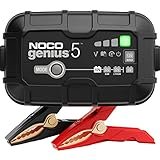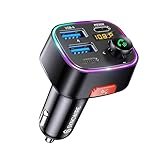Pulsar 150 Disc Brake Pump Price Revealed

The Pulsar 150 disc brake pump price can vary, but expect to pay between $20 to $50 for a new, genuine part, with installation costs adding to the total.
Key Takeaways
Locate accurate Pulsar 150 disc brake pump prices.
Understand factors influencing the cost.
Learn about installation options and expenses.
Identify common symptoms of a failing brake pump.
Discover where to purchase replacement parts.
The Pulsar 150 is a popular motorcycle, known for its performance and affordability. When it comes to maintenance, ensuring your braking system is in top shape is paramount for safety. One crucial component is the disc brake pump, also known as the master cylinder. If you’re experiencing issues with your Pulsar 150’s braking, you might be wondering about the Pulsar 150 disc brake pump price. This guide will demystify the cost, explore what influences it, and provide you with all the information you need to get your bike back to safe stopping power. Let’s dive into understanding the investment for this essential part.
Why Your Pulsar 150 Disc Brake Pump Might Need Replacing
Your motorcycle’s braking system is its most critical safety feature. The disc brake pump (master cylinder) is the heart of this system. It converts the mechanical force from your brake lever into hydraulic pressure, which then forces the brake pads to clamp onto the disc rotor, slowing or stopping your bike. Like any mechanical part, it can wear out or fail over time due to several factors. Understanding these reasons can help you identify potential issues early and avoid more costly repairs down the line.
Common culprits for a failing disc brake pump include:
- Age and Wear: Rubber seals and internal components degrade over time, especially with exposure to heat, moisture, and brake fluid.
- Corrosion: Moisture ingress can lead to corrosion within the pump’s bore, causing leaks and reduced efficiency.
- Contaminated Brake Fluid: Old or contaminated brake fluid can damage internal seals and create pressure issues. Regular fluid changes are vital.
- Physical Damage: Impacts or accidental damage can compromise the integrity of the pump housing.
- Overheating: Excessive braking or a faulty caliper can cause the brake fluid to overheat, leading to vapor lock and brake failure.
Recognizing the signs of a problem is key. If you notice your brake lever feeling spongy, if it travels too far before engaging, or if you experience a sudden loss of braking power, your disc brake pump could be the culprit.
Pulsar 150 Disc Brake Pump Price: What to Expect
The Pulsar 150 disc brake pump price can fluctuate based on several factors. However, for a genuine, new part, you can generally expect to pay somewhere in the range of $20 to $50. This price is for the component itself. It’s important to remember that this is an estimate, and actual costs can vary.
Here’s a breakdown of what influences the Pulsar 150 disc brake pump price:
- Genuine vs. Aftermarket Parts: Genuine parts, manufactured by or for Bajaj (the maker of the Pulsar), are typically more expensive but offer guaranteed compatibility and quality. Aftermarket parts can be cheaper but vary widely in quality and may not fit as precisely.
- Location and Retailer: Prices can differ between online stores, local motorcycle dealerships, and independent auto parts shops. Regional availability and shipping costs also play a role.
- Model Year Specificity: While often interchangeable, some brake pump designs might have minor variations between different Pulsar 150 model years, potentially affecting price.
- Promotions and Discounts: Keep an eye out for sales or special offers from retailers.
When searching for the “Pulsar 150 disc brake pump price,” remember to factor in additional costs if you plan to have it professionally installed.
Understanding Brake Fluid and Its Importance
Before we delve deeper into replacement costs, it’s crucial to understand the role of brake fluid. Brake fluid is a hydraulic fluid that transmits pressure from the master cylinder to the brake caliper. It’s designed to withstand high temperatures and not compress under pressure.
Key characteristics of brake fluid include:
- Hygroscopic Nature: Most brake fluids are hygroscopic, meaning they absorb moisture from the atmosphere. This is a significant factor in fluid degradation.
- Boiling Point: Brake fluid has a high boiling point. When it absorbs water, its boiling point lowers, making it susceptible to vapor lock under heavy braking conditions. Vapor lock is when the fluid boils, creating vapor pockets that can be compressed, leading to a spongy brake lever and reduced braking effectiveness.
- Corrosion Inhibition: Brake fluid contains additives to prevent corrosion of metal components within the braking system.
Regularly checking and changing your brake fluid is essential for maintaining the health of your entire braking system, including the disc brake pump. The recommended interval for brake fluid replacement is typically every two years, or as specified in your Pulsar 150 owner’s manual. Using the correct DOT-rated brake fluid (e.g., DOT 3, DOT 4) is critical. For specific recommendations for your Pulsar 150, consult your owner’s manual or a qualified mechanic. The National Highway Traffic Safety Administration (NHTSA) provides valuable safety information regarding vehicle maintenance and recalls, which can be useful for any vehicle owner.
Installation: DIY vs. Professional Mechanic
Once you’ve purchased your Pulsar 150 disc brake pump, the next consideration is installation. You have two main options: performing a DIY installation or taking it to a professional mechanic.
DIY Installation: Tools and Steps
If you’re mechanically inclined and have the right tools, a DIY installation is a cost-saving option. However, it requires precision and attention to detail.
Tools You’ll Likely Need:
- New Pulsar 150 disc brake pump
- Correct type and amount of brake fluid (check your manual)
- Wrenches and socket set
- Brake bleeding kit (optional but highly recommended)
- Pliers
- Torque wrench (for specific bolts)
- Gloves and eye protection
- Clean rags
- Container for old brake fluid disposal
- A helper (for bleeding the brakes)
General Steps for DIY Installation:
- Safety First: Ensure your motorcycle is on a stable, level surface. Wear gloves and eye protection.
- Drain Old Fluid: Locate the brake fluid reservoir. Using a syringe or pump, carefully drain as much old fluid as possible.
- Remove Old Pump: Disconnect the brake line from the old master cylinder. Be prepared for some fluid to drip out. Then, remove the bolts holding the master cylinder to the handlebar.
- Install New Pump: Mount the new Pulsar 150 disc brake pump onto the handlebar. Reconnect the brake line, ensuring a tight seal. Do not overtighten.
- Refill with New Fluid: Fill the reservoir with the correct type of fresh brake fluid.
- Bleed the Brakes: This is the most crucial step. It involves removing air bubbles from the brake line.
- Attach a clear tube to the bleeder screw on the caliper and place the other end into a container.
- Have your helper squeeze the brake lever and hold it.
- Open the bleeder screw slightly to allow fluid and air to escape.
- Close the bleeder screw before releasing the brake lever.
- Repeat this process until no more air bubbles are visible in the fluid and the brake lever feels firm.
- Top Off Fluid: Ensure the brake fluid reservoir is filled to the correct level.
- Test Brakes: Carefully test your brakes at low speeds in a safe area before riding normally. Check for leaks around the connections.
Remember that improper bleeding can lead to ineffective brakes, which is extremely dangerous.
Professional Installation Costs
If you’re not comfortable with mechanical work or lack the necessary tools, professional installation is the safer route. The cost of professional installation for a Pulsar 150 disc brake pump typically ranges from $50 to $150. This price includes labor and may or may not include the cost of brake fluid.
Factors influencing professional installation costs:
- Labor Rates: Different workshops have varying hourly rates.
- Complexity: While changing a brake pump is generally straightforward, some bikes might have more intricate fairings or lines that can increase labor time.
- Location: Costs can be higher in major metropolitan areas compared to smaller towns.
- Shop Type: Dealerships may charge more than independent repair shops.
When getting a quote, always clarify what is included (parts, labor, brake fluid, disposal fees).
Where to Buy Your Pulsar 150 Disc Brake Pump
Finding a reliable source for your Pulsar 150 disc brake pump is essential for ensuring quality and proper fitment. Here are some common places to look:
- Authorized Bajaj Dealerships: This is the best place to get genuine parts. The price might be slightly higher, but you are guaranteed authentic components designed specifically for your Pulsar 150.
- Online Motorcycle Parts Retailers: Websites like RevZilla, Motorcycle Superstore, or dedicated Bajaj parts sites often carry a wide range of components, including brake parts. Compare prices and read reviews to ensure you’re buying from a reputable seller.
- Local Motorcycle Shops: Independent motorcycle repair shops often sell parts directly to customers. They can also offer expert advice on the best part for your needs.
- Aftermarket Parts Suppliers: For those seeking a more budget-friendly option, aftermarket manufacturers produce replacement brake pumps. Research brands known for quality and customer satisfaction. Ensure the part is specified for your exact Pulsar 150 model year.
When buying online, always double-check the part number and ensure it’s compatible with your Pulsar 150. Look for return policies in case the part isn’t correct.
Comparing Part Costs: Genuine vs. Aftermarket
The decision between genuine and aftermarket parts often comes down to a balance of cost, quality, and peace of mind.
| Feature | Genuine Pulsar 150 Disc Brake Pump | Aftermarket Pulsar 150 Disc Brake Pump |
|---|---|---|
| Price Range | $30 – $50+ | $20 – $40 |
| Quality & Fitment | Guaranteed OEM specifications, perfect fit. | Variable; can be excellent or poor depending on brand. |
| Durability | Generally higher due to stringent manufacturing standards. | Can vary significantly by manufacturer. |
| Warranty | Often included with purchase from authorized dealers. | Varies by brand and retailer. |
| Availability | Best at authorized dealerships. | Wide availability online and at most parts stores. |
| Risk | Low risk of compatibility issues or defects. | Higher risk of fitment problems or premature failure if low-quality. |
For critical safety components like brake pumps, many riders opt for genuine parts to ensure optimal performance and safety. However, reputable aftermarket brands can offer a good balance of quality and affordability.
Pro Tips
When checking your brake fluid level, do so on a level surface. Low fluid levels can indicate a leak or worn brake pads (as the caliper piston extends further).
Dispose of old brake fluid responsibly. It is a hazardous chemical and should not be poured down drains or into the environment. Many auto parts stores or repair shops accept used fluids for recycling.
If you’re doing a DIY brake bleed, keep the master cylinder reservoir topped up. Running it dry will introduce more air into the system, undoing your hard work.
Common Questions About Pulsar 150 Disc Brake Pump Replacement
Here are some frequently asked questions regarding the Pulsar 150 disc brake pump price and its replacement:
How much does it cost to replace a motorcycle brake master cylinder?
The cost to replace a motorcycle brake master cylinder can range from $70 to over $250, depending on the bike’s make and model, whether you use genuine or aftermarket parts, and the labor costs for installation. For the Pulsar 150, expect the part to be $20-$50 and professional installation to be an additional $50-$150.
What are the symptoms of a bad brake master cylinder?
Common symptoms include a spongy or soft brake lever, a lever that pulls all the way to the handlebar, a gradual loss of braking power, and brake fluid leaks around the master cylinder or lever assembly.
How often should a brake master cylinder be replaced?
A brake master cylinder itself doesn’t have a fixed replacement interval. It should be replaced when it shows signs of failure or leaks, or if corrosion affects its internal seals. However, the brake fluid it contains should be changed regularly, typically every two years.
Can I just replace the seals in my Pulsar 150 disc brake pump?
It is often possible to replace the internal seals (rebuild kit) of a brake master cylinder. This is usually cheaper than buying a whole new unit. However, if the cylinder bore is scratched or corroded, simply replacing the seals may not fix the problem. You can find Pulsar 150 brake master cylinder rebuild kits, which would be less expensive than a full pump.
What is the difference between a brake caliper and a brake master cylinder?
The brake master cylinder (disc brake pump) is mounted on the handlebar and converts your lever’s force into hydraulic pressure. This pressure is sent through the brake line to the brake caliper, which houses the brake pads. The caliper then uses this pressure to squeeze the pads against the brake rotor, creating friction to slow the wheel.
Where can I find an online Pulsar 150 disc brake pump price comparison?
You can compare prices by searching on major online motorcycle parts retailers, as well as through general e-commerce platforms. Look for reputable sellers and check customer reviews. Always verify part compatibility for your specific Pulsar 150 model year.
Is it safe to ride with a faulty brake master cylinder?
No, it is not safe to ride with a faulty brake master cylinder. Compromised braking performance significantly increases the risk of accidents. If you suspect an issue with your brake system, stop riding immediately and have it inspected and repaired by a qualified mechanic.
Conclusion
Maintaining your Pulsar 150’s braking system is non-negotiable for safe riding. Understanding the Pulsar 150 disc brake pump price, whether you’re opting for a genuine part or a reputable aftermarket alternative, typically ranges from $20 to $50 for the component alone. Factor in an additional $50 to $150 for professional installation if you’re not performing the work yourself. By being aware of the symptoms of a failing pump, the importance of brake fluid, and your options for purchasing and installation, you can ensure your motorcycle remains a reliable and safe companion on the road. Regular checks and prompt replacements of worn parts are key to enjoying every mile with confidence.






